How to understand the welfare of horses
By: Maribel Estefanell Posted: 15/10/2021
As horse lovers, we want horses to be happy and healthy. But it involves something more than just feeding and shelter; there are more aspects that we must take into account to ensure the well-being of our horse.
As our interest in equine welfare grows, so does the body of ideas on how to assess this welfare. In this article, we are going to break down the evolution and the studies that have been carried out in this regard.
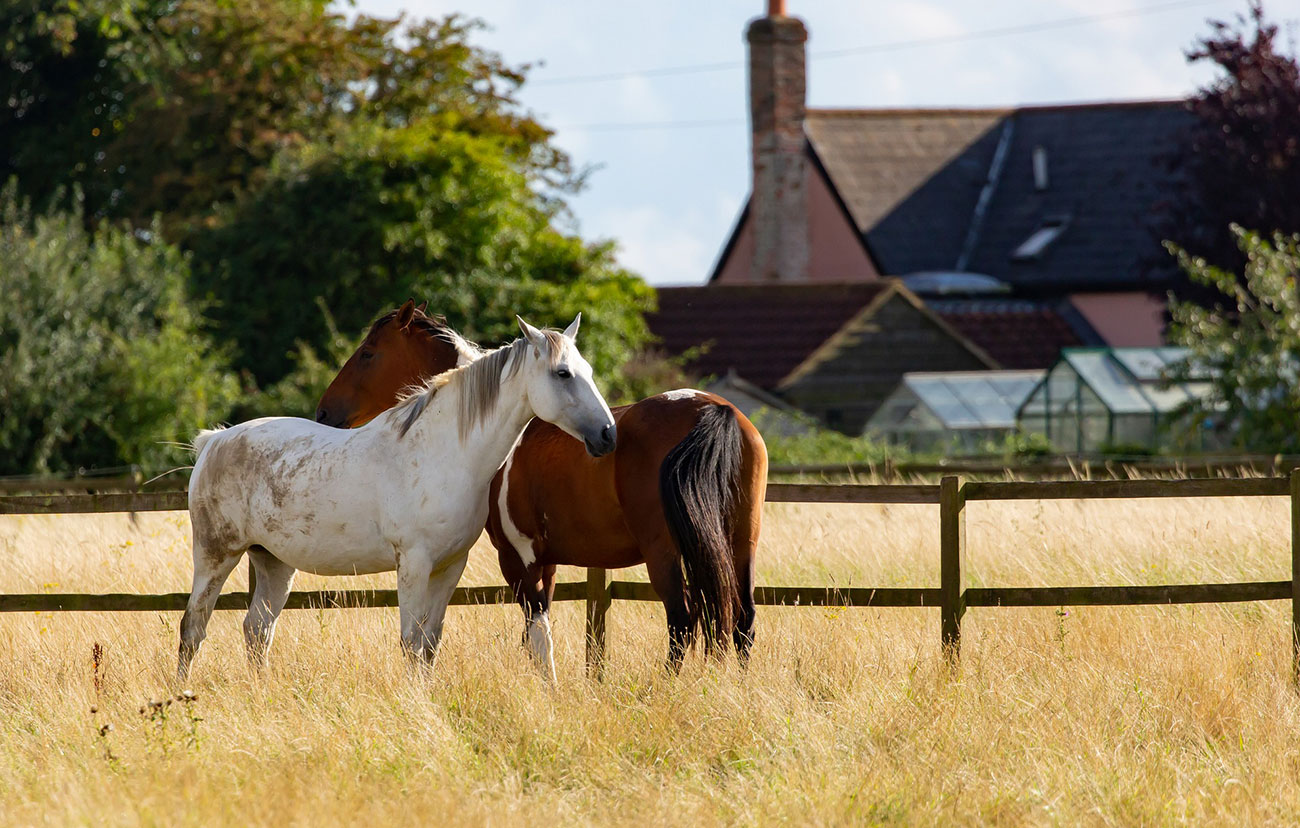
A growing interest in animal welfare
In the past, people were mainly concerned about the health of their horses, but now, with the implementation of the concept of "animal welfare", horse owners’ attitude towards their animals has improved considerably.
Concern for animal welfare is as old as livestock; although the reason was not so much for the animal itself but to avoid the death of the animal and ensure that its meat was safe for human consumption.
The current concept of "animal welfare" includes both the physical and emotional state of the animal. To achieve this, we must take into account different aspects such as housing and working conditions, human attitudes and practices, and the resources available.
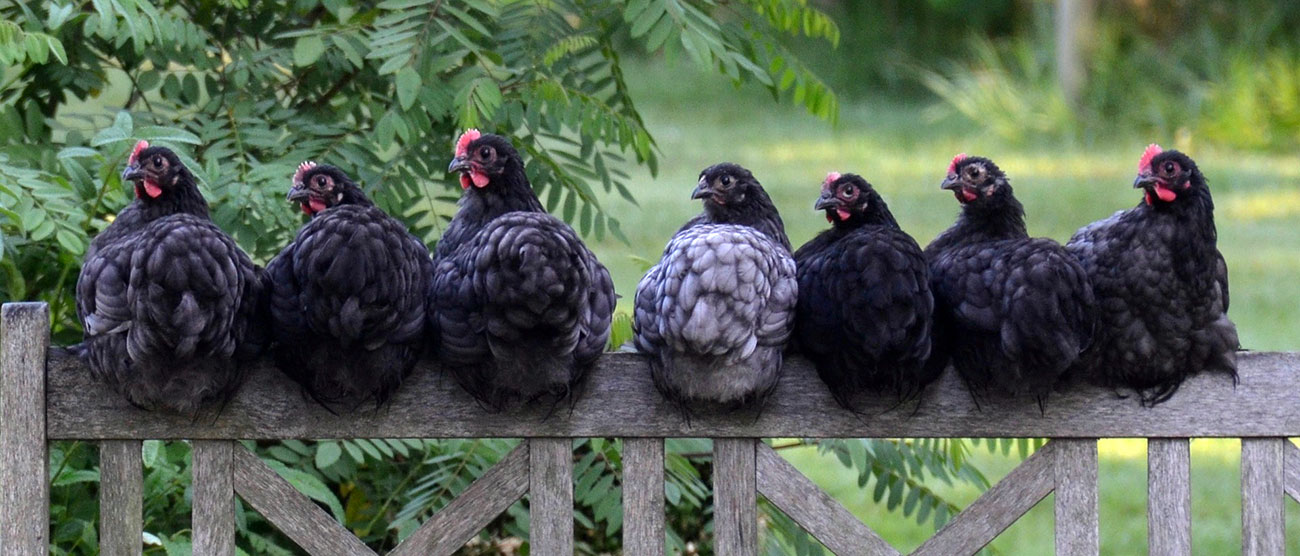
It was in the mid-60s when Roger Brambell stated five principles to describe the conditions that will ensure the welfare of an animal. These recommendations became known as "the Five Freedoms" of animal welfare.
Then, in 1994, Mellor and Reid proposed the 5 Domains Model for Animal Welfare, which included new positive measures for the well-being of animals.
Years later, between 2004 and 2009, the Welfare Quality project was developed in Europe. It focused mainly on farm animals, where the first 4 domains were broken down into 12 criteria to assess animal welfare.
The acceptability by the wider public of the ways we use animals, aligns with the extent to which the animal’s welfare is compromised or enhanced by what we are doing. The so-called "social license" comes from the recognition of the welfare balance and whether or not that use is regarded as acceptable by the wider public.
Would you like to be part of a group with an equestrian soul?
Join the Ampascachi Community. Obtain exclusive benefits for your holidays.
We tell you how to start, train and take care of your horse.
Interviews with direct providers of riding tours around the world.
Opinions of outstanding equine scientists and personalities in the equestrian sport world.
The animal welfare of horses
If we focus on our horses, we find that there are several articles and studies about this topic.
Our scenario is very different from livestock. Here horses are used for races, dressage or show jumping, or for horseback riding. Occasionally, some are used in rural areas as work horses.
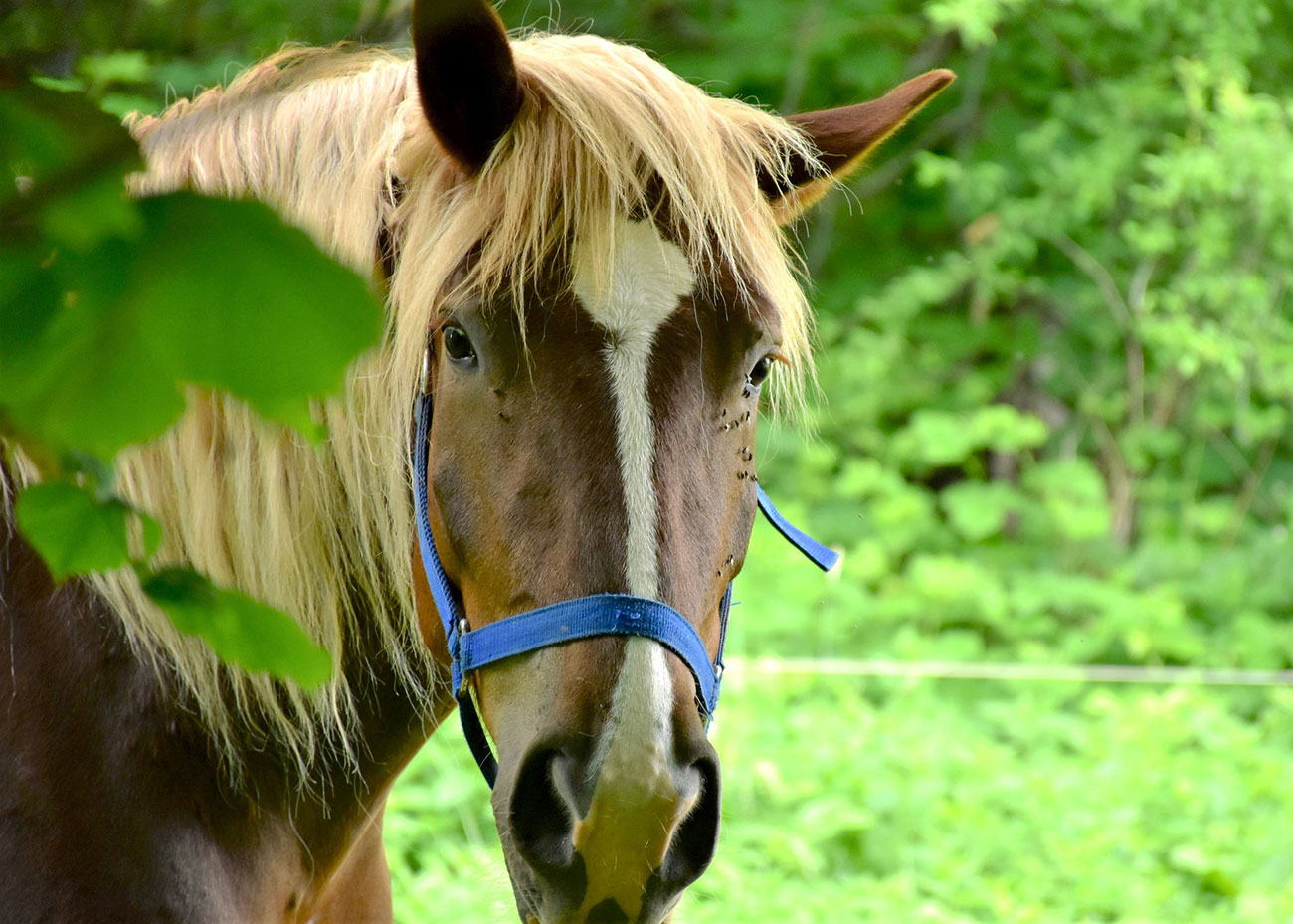
Either way, the study of equine ethology and the pursuit of horse welfare is here to stay.
One of the trends that has occurred recently is that, instead of looking for signs of negative welfare in the hope of eliminating them, more positive signs are sought, which can indicate that the horse has a life worth living.
To achieve this, we must be able to discover those signs that will tell how the horse feels both physically and emotionally. Not only at a particular moment, but in a global way, from birth to death, observing the different environments and contexts.
In short, we must assess the quality of the horse’s life, and interpret its behaviour and facial expressions, which will help us create daily behaviour patterns through ethograms.
For a correct horse welfare assessment, the method that is widely used is the 5 Domains Model for animal welfare.
Horses are sentient animals. Sentience is the capacity of an animal to have positive and negative experiences that matter to it and affect its welfare, and the five domains model is a very good vehicle for exploring, understanding, managing, and assessing those experiences.
Although it is true that it is necessary to adapt this model to the equine world.
In addition to these domains, there are several guides to help develop the welfare of the horse.
One of these is the Guide to good animal welfare practice for the keeping, care, training and use of donkeys and donkey hybrids developed by the voluntary initiative group on equines under the EU Platform on Animal Welfare.
The 5 domains of animal welfare
Now that we have already seen how the practice of animal welfare and its adaptation has been implemented in the equine world, we will explain the 5 domains of animal welfare.
They are classified into 4 physical / functional domains and a fifth domain, which is the mental state.
- Nutrition
- Health
- Environment
- Behaviour
- Mental Domain

All five domains are equally important and they ensure both the physical and mental health of animals, as well as their proper behaviour.
David Mellor proposed the five domains principle, which recognises that animals can experience feelings, ranging from negative to positive, and when combined, they make up the fifth domain, the mental domain.
Subscribe to the Ampascachi Community and obtain benefits and exclusive content. Furthermore, we offer free advice on horses and equestrian tourism.
Let's define these 5 domains more thoroughly:
Nutrition
All animals must have access to clean water and quality food, without suffering from hunger or thirst. They should be given the right amount and the right quality of fresh water and food, according to their species, age and physiological state.
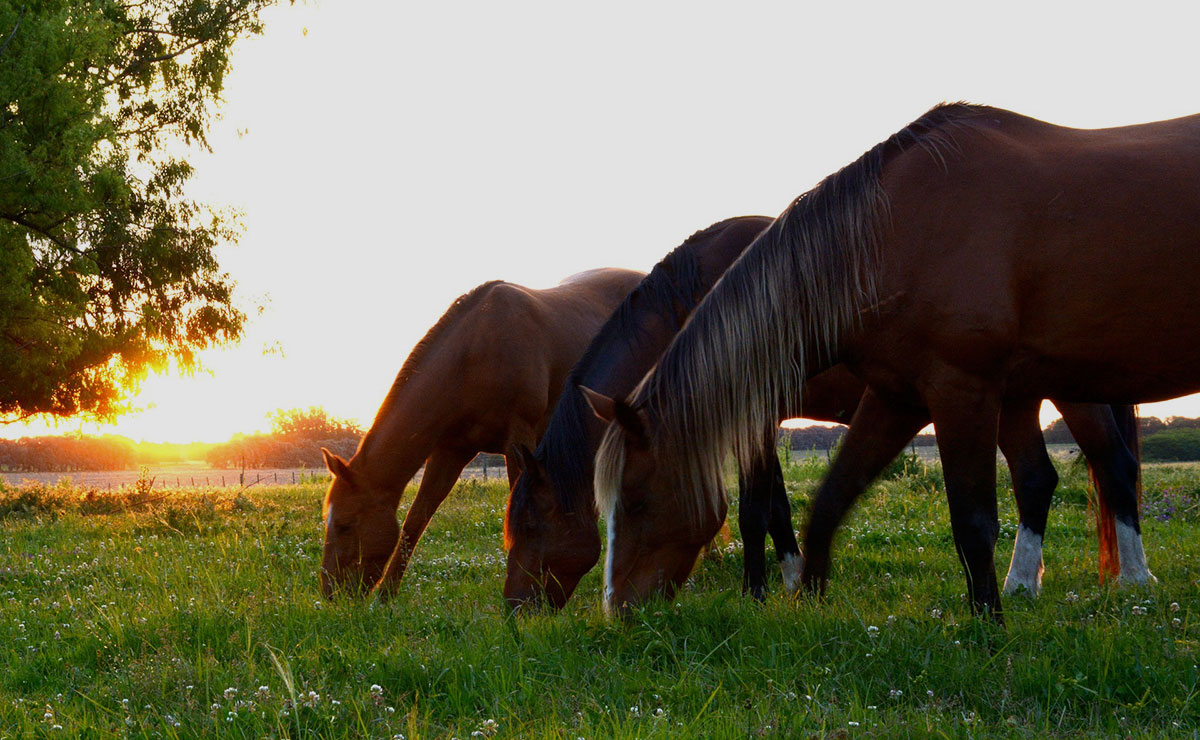
Health
We must try to guarantee good physical health to the animal, preventing any injury or disease. Regular visits to the vet are necessary to help prevent diseases or have them treated adequately.
Environment
All animals should live in an appropriate environment. These places need to be suitable for each species and we should provide animals with shelter and a safe, comfortable resting area. Shelter from adverse weather conditions is also important.
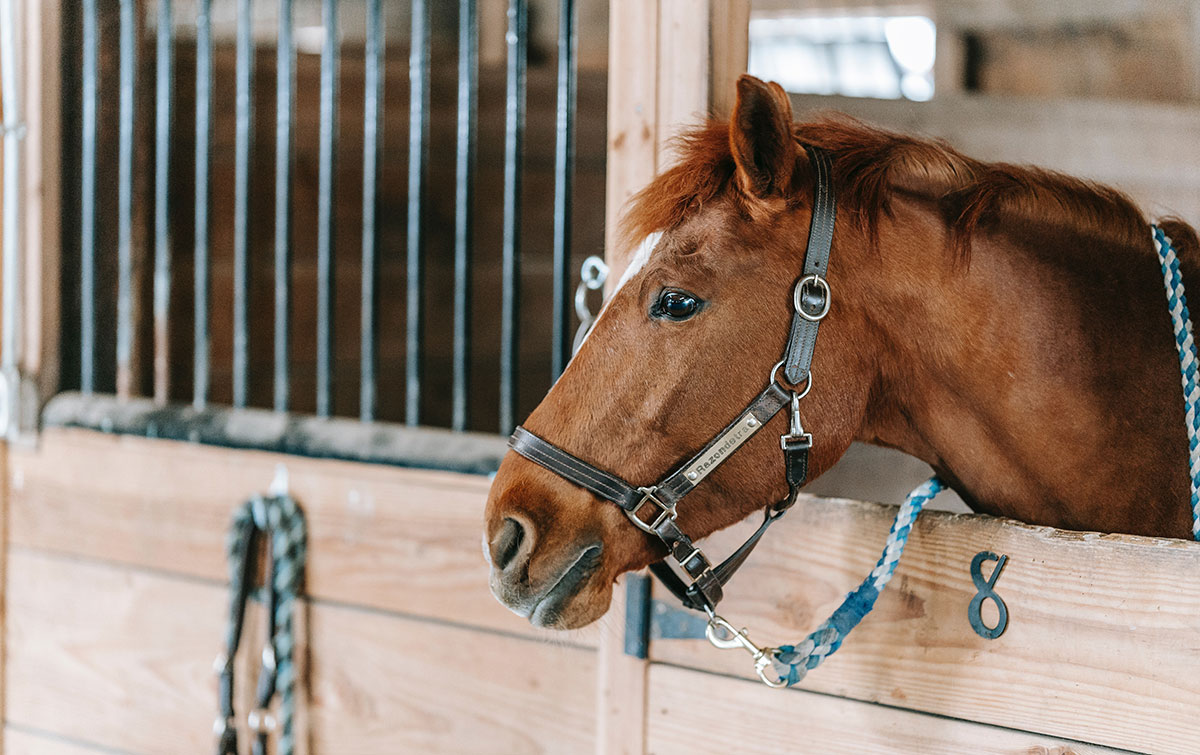
Behaviour
The company of the animals own kind encourages the expression of normal behaviour. All animals should be allowed to express their normal behaviour, that is, the way an animal acts in its natural environment.
Mental state
It is scientifically proven that animals are sentient beings. Therefore, it is necessary to avoid unnecessary anxiety, fear, frustration and stress. Besides, animals can also have positive experiences and mental states, so we should try to encourage these states.

The 5 domains adapted to equine welfare
For an improvement in the evaluation and use of the 5 domains model of animal welfare adapted to horses, Cristina Wilkens has published a Horse Welfare Assessment Guide in“Horse & People” magazine.
This guide clearly states what should be avoided in each of the 4 functional domains, the positive effects that can be achieved and the affective states that occur in each domain (that is, the fifth domain).
HORSE WELFARE ASSESSMENT GUIDE
This guide is an adaptation of the Five Domains Model of Welfare Assessment and Monitoring that shows how it can be applied to achieve good horse welfare.
The model has four physical and functional domains and a mental domain that acknowledges the horse's experience.
The aim for providing good welfare is to achieve physical and functional well-being, as weill as give horses the opportunity to experience positive emotions in all areas: nutrition, health, environment, behaviour and interactions with humans.
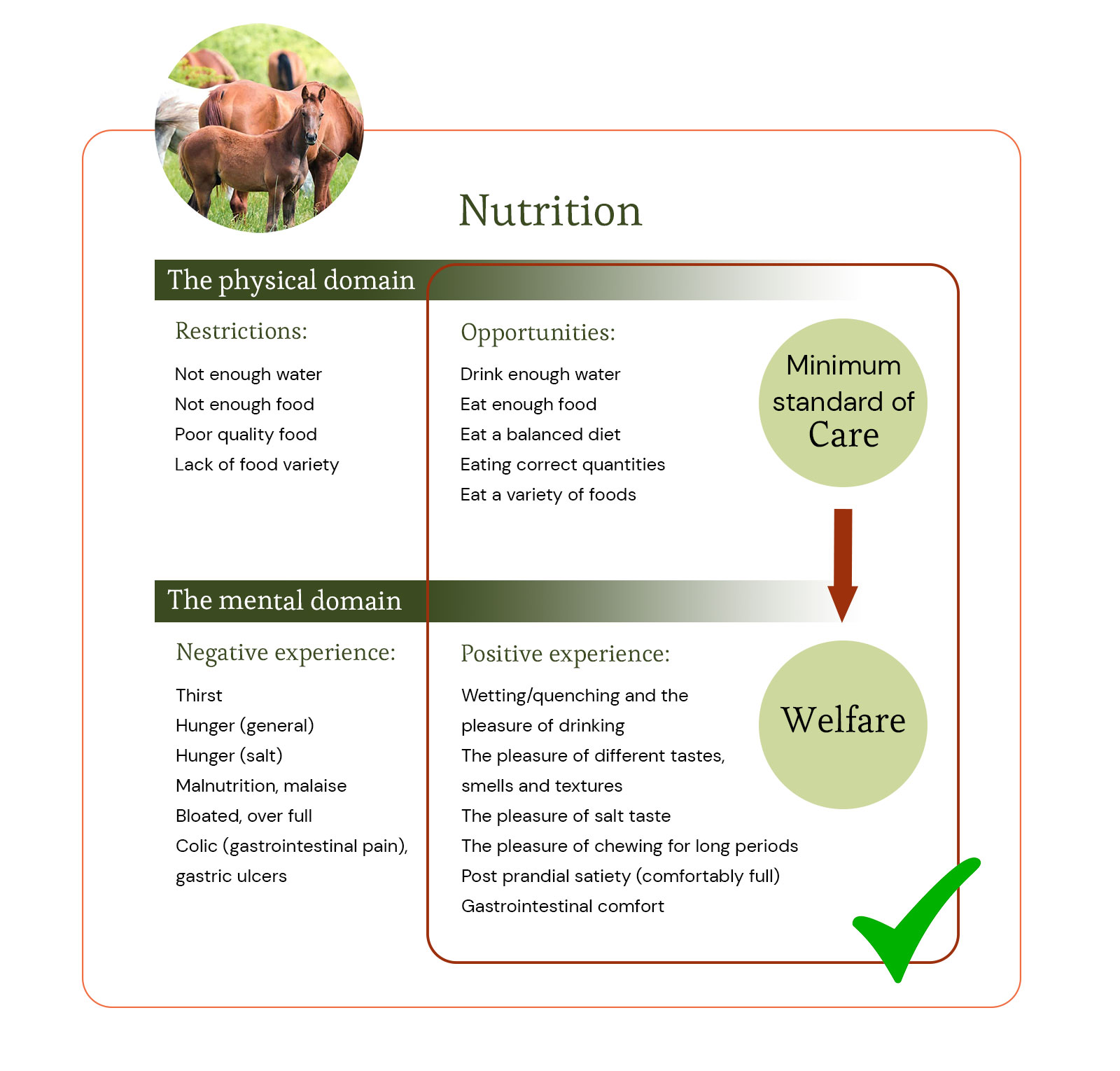

As well as providing for the physical and behavioural needs, hoy many positive experiences can you make available to your horse on a daily basis?
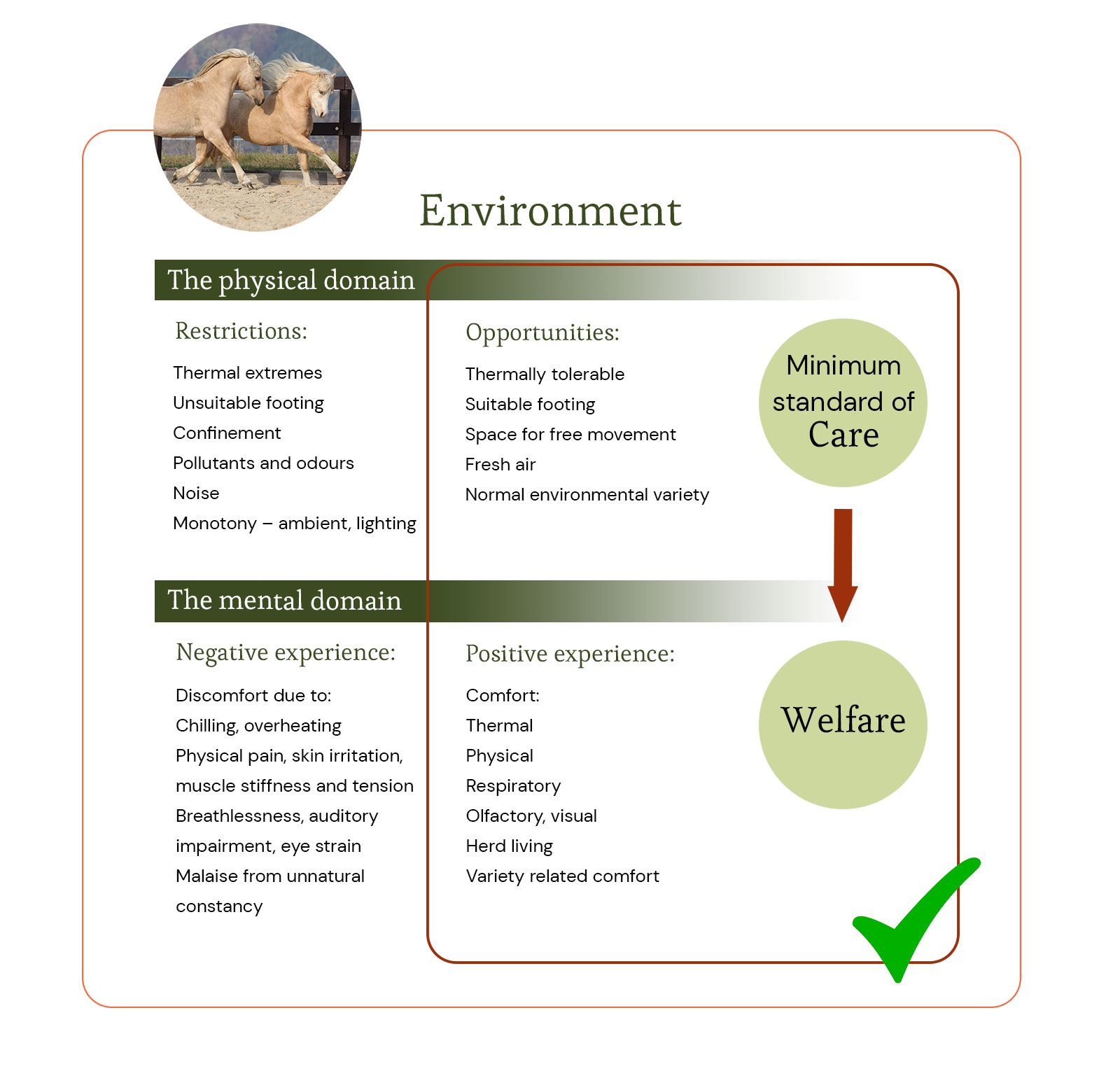

Adapted by Cristina Wilkens, Horse and People Magazine, from: Mellor, D.J. (2017). Operational details of the Five Domains Model and its key applications to the assessment and management of animal welfare. Animals 7(8), 60. doi: 10.3390/ani7080060.
Final Conclusions
As can be seen in this article, over the years different methods have been implemented to ensure the well-being of our beloved horses.
The use and evaluation of these methods must be implemented by professionals in the horse sector, breeders, trainers and all those people who practice equestrian sports or equestrian tourism.
Organizations such as the ISES ( International Society for Equitation Science) promote and encourage research studies applied to horses, allowing great progress in equestrian activities and, consequently, improving the welfare of horses.
Different aspects such as the evolution of the horse from birth and its relationship with the mother can help us apply one of the models of animal welfare such as behaviour. The assessment and application of the 5 models of animal welfare must be done throughout the horse’s life.
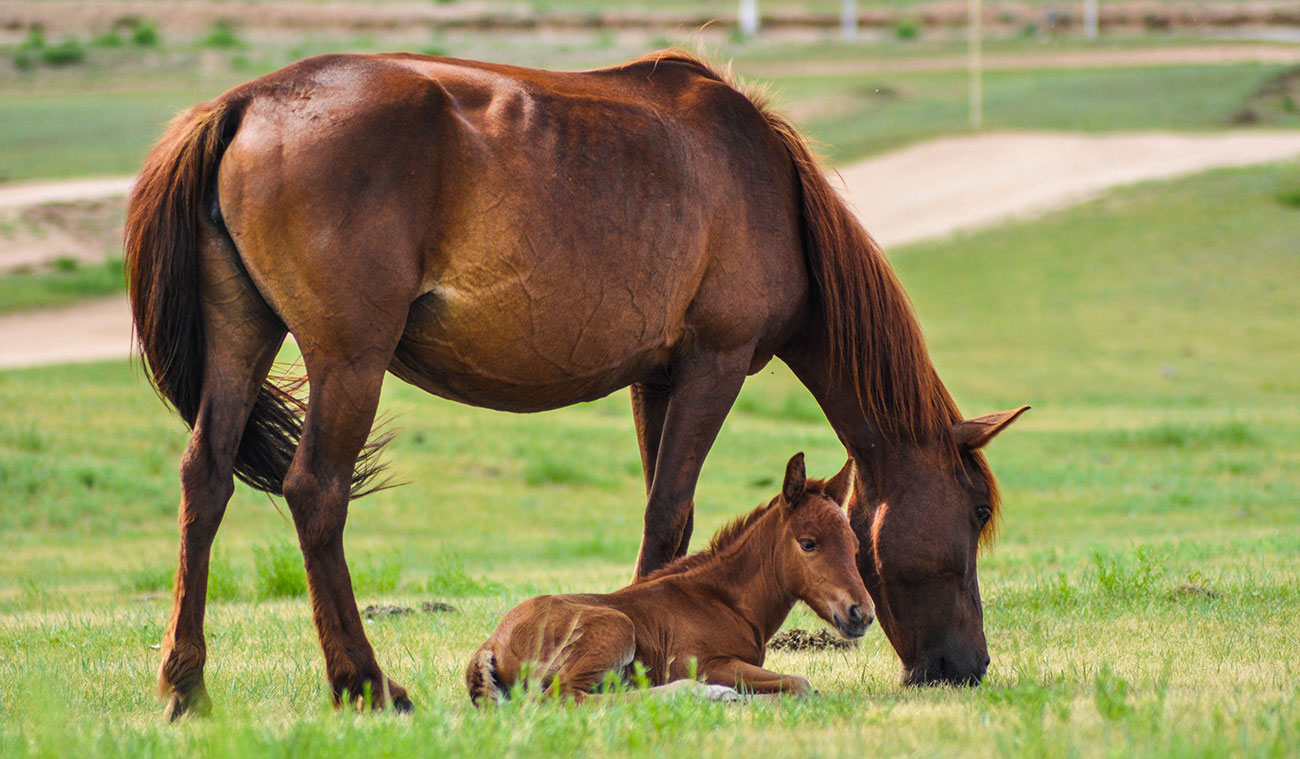
To better understand these research studies, we recommend that you read Ampascachi’s interviews with experts and global leaders in the field, such as Dr. Camie Heleski, Dr. Janne W. Christensen and Dr. Paul McGreevy
Would you like to delve deeper into the world of horse training?
Download our free guide on Horse training step by step. There we tell you everything we have learned about horse training in more than 25 years of experience.
And if you want to be a professional horse trainer and get field-based training, you should check out our training program. You will have the opportunity to live in our equestrian centre and experience our full training process with young horses.
~
THIS COULD ALSO BE INTERESTING
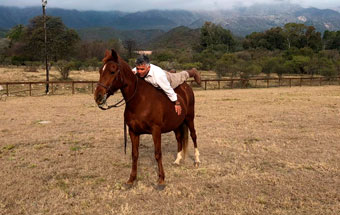
How are horses bred and trained at Ampascachi?
Ampascachi specializes in Equestrian Tourism in Argentina. We offer visiting Argentina, riding a Peruvian Paso Horse which we breed, start and train.
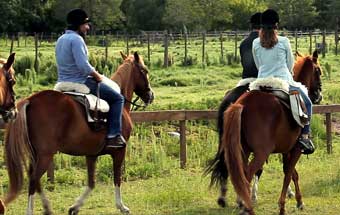
8 benefits of riding horses
8 physical and psychological benefits of riding: exploring mountains and valleys, observing landscapes, galopping on plains.
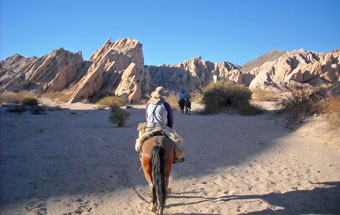
Visiting Northern Argentina on Horseback
Travelling around the north of Argentina on horseback offers you some wonderful options. Riding a horse, you will go through the awesome landscapes of the Calchaqui Valleys.
~
WHAT IS YOUR OPINION? LEAVE A COMMENT
Your comments
Very interesting your publication. I didn’t know that there were so many models of equine well-being. I’ve got a publication about the basic needs of horses that could interest you: https://caballando.com
Planning your horse riding holidays?
Join the Ampascachi Community. You will get exclusive advantages and guidance for your next horse riding holiday.


 German
German French
French Spanish
Spanish